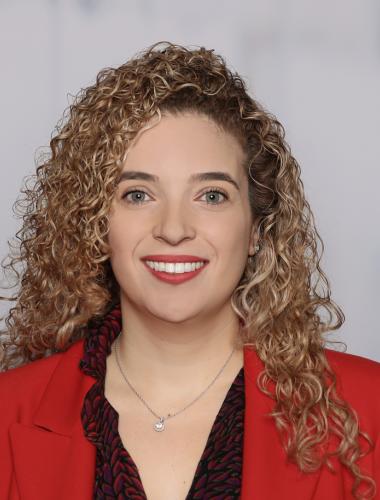The evolving landscape of private credit funds
- Articles and memoranda
- Posted 23.11.2023
Private credit funds are reshaping European finance, particularly loan originators. Facing regulatory challenges and legal complexities, these funds benefit from better guidance under ELTIF 2.0 and AIFMD II, reshaping investment strategies and compliance within the EU's evolving financial landscape.
In recent years, private credit funds, particularly those originating loans, have risen in prominence, filling gaps left by traditional lenders. These funds, however, have historically navigated a complex array of regulatory obstacles and legal ambiguities in some EU member states, given their distinctive role in directly originating loans rather than merely investing in pre-existing ones. The introduction of the ELTIF Regulation in 2015 and its amended version (EU) 2023/606 (known as “ELTIF 2.0”), alongside the proposed amendments to the Alternative Investment Fund Managers Directive (referred to as "AIFMD II"), mark a significant development for the private debt sector.
In recent years, private credit funds, particularly those originating loans, have risen in prominence, filling gaps left by traditional lenders.

Xavier Le Sourne
Partner
ELTIF 2.0: A new chapter for private debt
Set to entry into force in January 2024, ELTIF 2.0 significantly impacts the private debt sector. It broadens the range of eligible assets to include STS (simple, transparent, and standardized) securitizations, capped at 20% of an ELTIF's capital. This expansion not only opens new investment opportunities but also enhances risk diversification that may also extend to residential mortgage-backed securities, commercial loans secured by immovable property, corporate loans including those granted directly to small- and medium-sized enterprises, or other distinct asset types like trade receivables, injects both structural integrity and variety into the investment options. Furthermore, ELTIFs can grant loans across the EU to eligible borrowers, with ELTIF 2.0 raising the market capitalization cap for listed “qualifying portfolio undertakings” from EUR 500 million to EUR 1.5 billion, providing ELTIFs with a more favorable liquidity profile.
AIFMD II: Strengthening market integration with rigorous compliance
AIFMD II also provides detailed guidelines for loan origination, both direct by an alternative investment fund (an “AIF”) and indirect through third parties or special purpose vehicles (without being classified as a delegation, as originally considered). Third party loan origination requires the participation of the AIF or the alternative investment fund manager (the “AIFM”) in structuring the loan or agreeing to its characteristics beforehand.
Furthermore, AIFMD II introduces a dual classification for loan-originating funds (“LOFs”) encompassing those primarily focused on this activity or those where originated loans constitute at least half of their net asset value.
While AIFMD II aims to integrate the market more cohesively, it does not provide unchecked freedom to loan-originating funds.

Kenza Bensaid
Senior Associate
While AIFMD II aims to integrate the market more cohesively, it does not provide unchecked freedom to loan-originating funds. It imposes stringent rules to balance economic stimulation with financial stability, such as:
- AIFMD II mandates the use of closed-end funds for loan origination, with limited exceptions for open-ended funds. Open-end structures are permissible if (i) there is alignment between liquidity risk, investment strategy, and redemption policy and (ii) the AIFM can demonstrate this to the competent authorities.
- LOFs need robust internal credit procedures, which are subject to annual reviews to ensure their effectiveness.
- The practice of originating loans solely for transfer to third parties is prohibited to ensure long-term stability.
- A 5% risk retention of the notional value of each loan is required, in principle, until the AIF starts to sell its portfolio.
- LOFs, managed by an AIFM, cannot provide loans to the AIFM, its staff, or entity to which the AIFM has delegated functions. Similarly, the AIF’s depositary and its delegates are also barred from receiving loans from the AIF.
- Borrowing limits for open-ended LOFs are 175%, and for closed-ended LOFs, 300%. Leverage calculations should use the commitment methodology.
- Loans to another AIF, UCITS and insurance companies are restricted, with a cap based on the AIF's capital, emphasizing diversified risk.
- Loans proceeds, after deducting permissible administration fees, must be fully attributed to the originating AIF, and all costs related to loan administration must be transparently disclosed.
Following a political agreement secured in July 2023, a final text of AIFMD II was released in November. This initiates a two-year period for Member States to implement these rules into their national laws, including specific transition provisions for existing LOFs.
With the adoption of AIFMD II, Luxembourg, renowned as a hub for LOFs, stands to further solidify its strategic position. The EU-wide endorsement of loan origination aligns with Luxembourg's long-standing practices and is significant for its financial sector, which is already well-regarded for its dynamic investment fund infrastructure and innovative fund toolbox. Ultimately, AIFMD II paves the way for more robust, transparent, and integrated financial operations across the EU, with Luxembourg playing a pivotal role in this evolved landscape.
This article was first published in Paperjam (published in June 2023). For further information, please visit [Paperjam].

